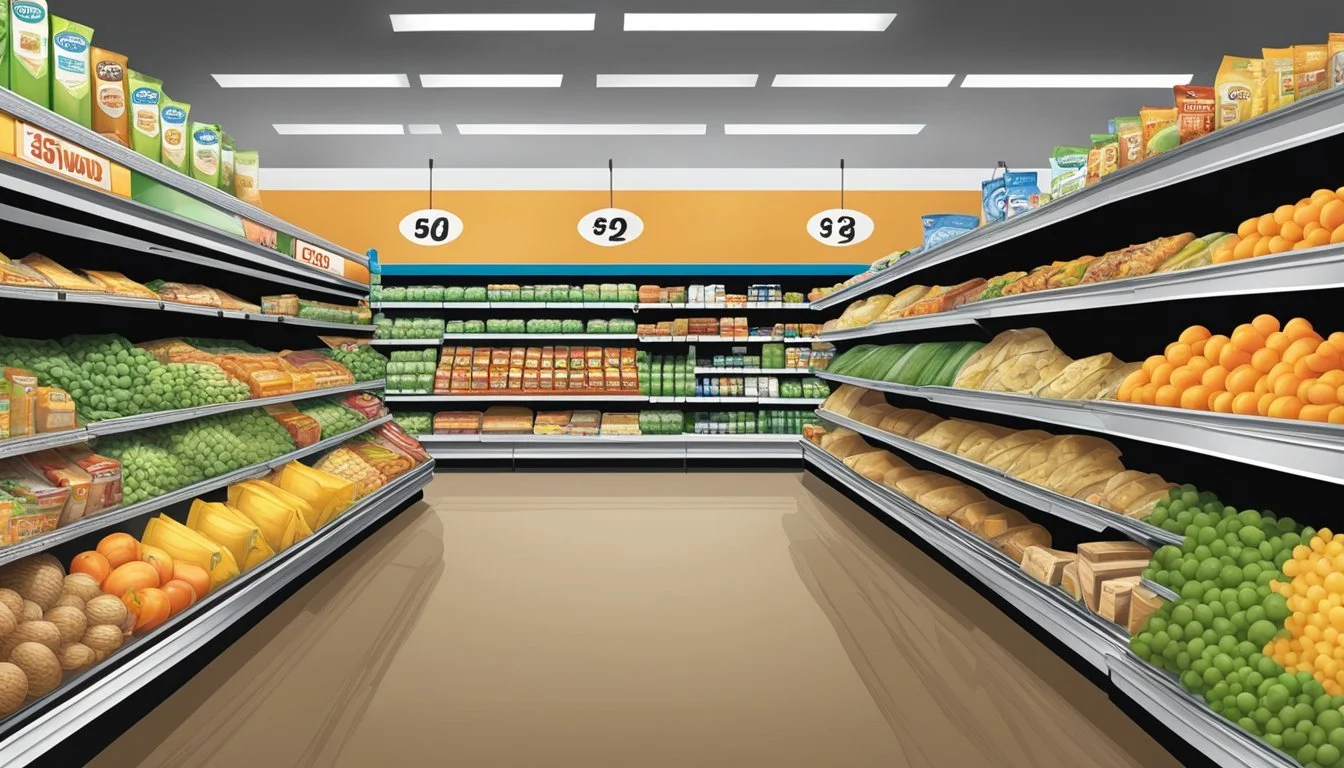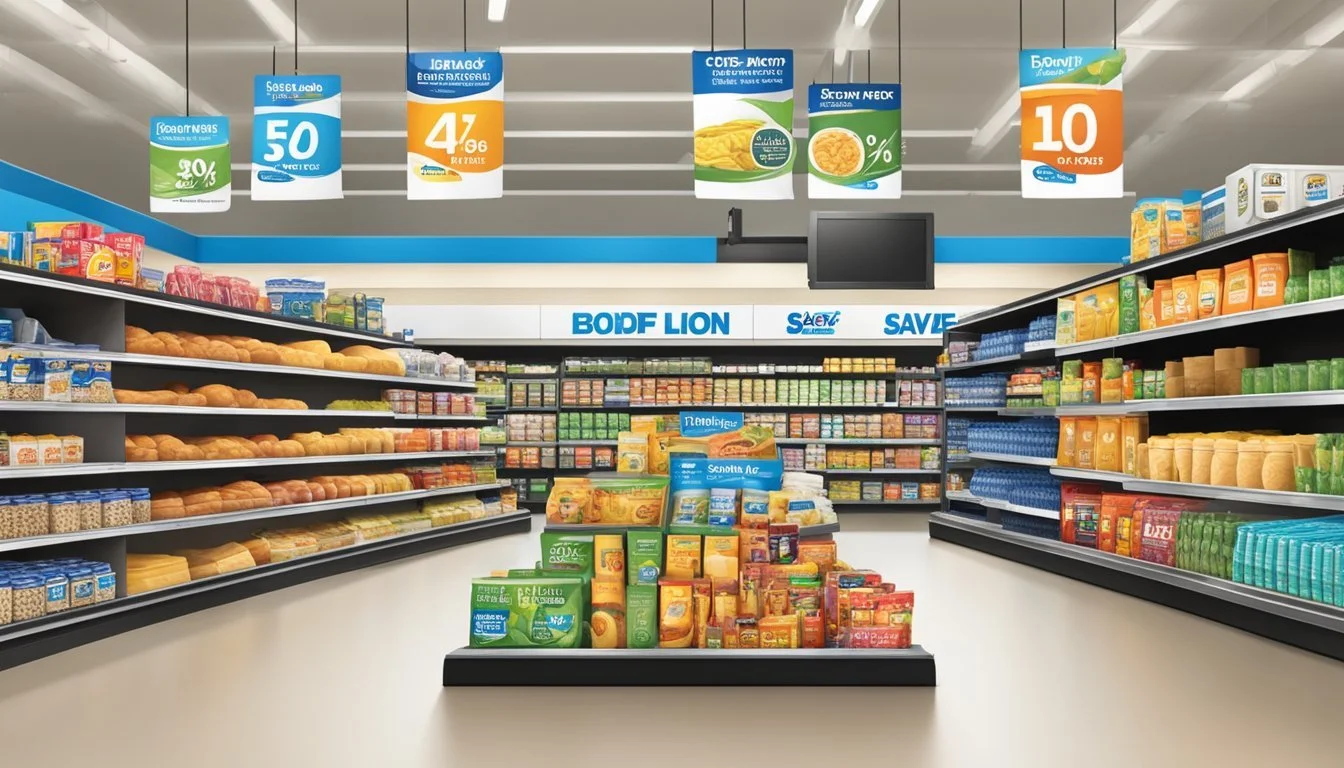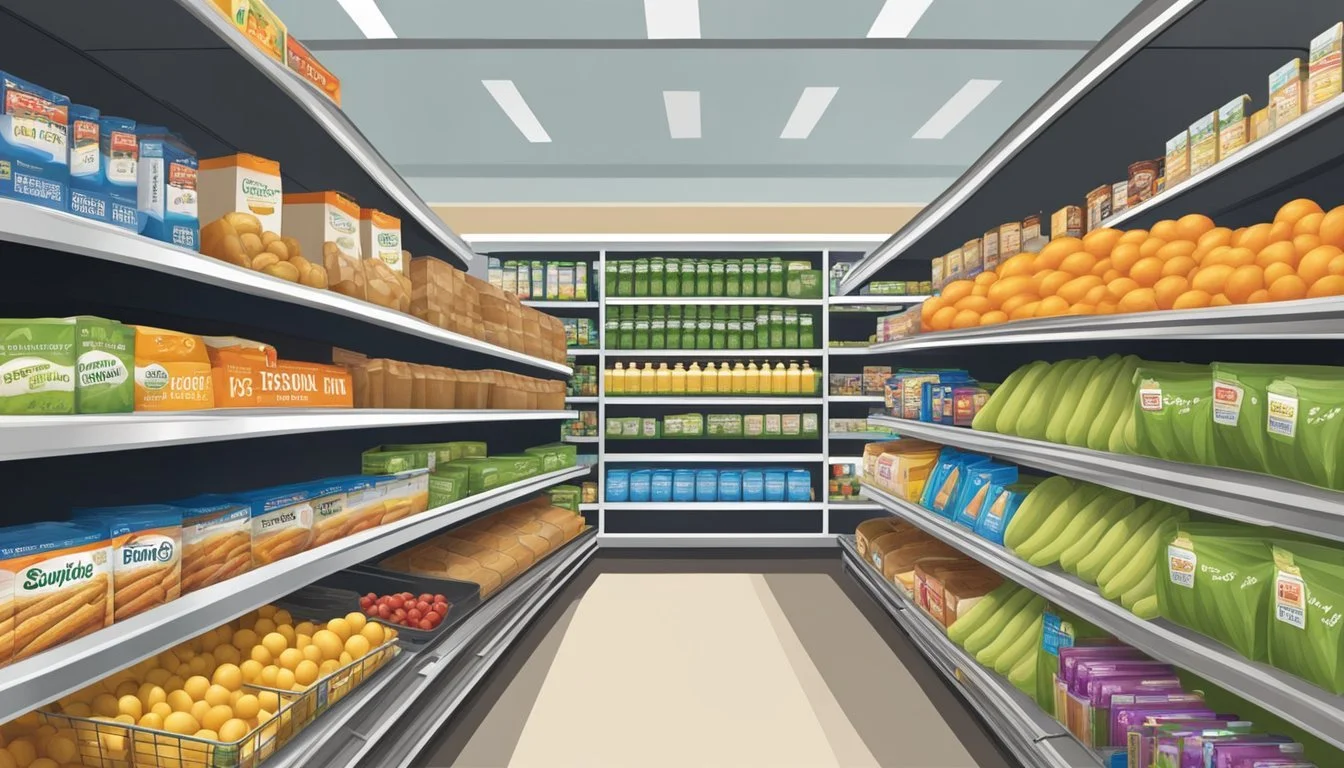Is Food Lion Cheaper Than Save Mart?
A price comparison of two popular grocery chains
When comparing grocery store prices, shoppers often wonder about the cost difference between regional chains. Food Lion and Save Mart are two such retailers operating in different parts of the United States.
Food Lion generally offers lower prices compared to many other supermarket chains, though direct comparisons to Save Mart are limited due to their separate geographic footprints. Food Lion focuses on budget-friendly options and has implemented strategic pricing to keep costs down for consumers. The chain's prices have been reported as 10% below average among surveyed grocery stores.
Save Mart primarily serves California and northern Nevada, while Food Lion operates in the southeastern and mid-Atlantic regions. This geographic separation makes direct price comparisons challenging for most shoppers. Both chains aim to provide value, but Food Lion's emphasis on low prices suggests it may edge out Save Mart in overall affordability for comparable products.
Understanding Grocery Pricing
Grocery pricing involves complex factors that determine the cost of items on store shelves. Retailers use various strategies to set competitive prices while maintaining profitability.
Components of Grocery Pricing
Wholesale costs form the base of grocery pricing. Stores negotiate with suppliers to obtain products at the lowest possible prices. Transportation and storage expenses are then factored in.
Labor costs, including wages for store employees, contribute to the final price. Overhead expenses like rent, utilities, and equipment maintenance also play a role.
Profit margins vary by product category. Staple items often have lower markups, while specialty products may carry higher margins.
Price Comparison Factors
Store location impacts pricing. Urban stores typically have higher operating costs, which can lead to increased prices compared to rural locations.
Volume purchasing allows larger chains to secure better deals from suppliers. This can result in lower shelf prices for customers.
Store brands often offer cost-effective alternatives to name-brand products. These items typically have lower prices due to reduced marketing costs.
Seasonal fluctuations affect produce prices. Local and in-season fruits and vegetables are generally more budget-friendly.
Sales, discounts, and loyalty programs provide opportunities for savings. Stores use these tactics to attract customers and remain competitive in the market.
Comparative Analysis of Food Lion and Save Mart
Food Lion and Save Mart employ different pricing strategies and policies to attract customers. Both chains offer competitive prices, but their approaches vary in terms of everyday pricing and special promotions.
General Price Trends at Food Lion and Save Mart
Food Lion focuses on providing everyday low prices across its product range. The chain frequently offers discounts and promotions on popular items. Food Lion's MVP loyalty program provides additional savings through personalized coupons and exclusive deals.
Save Mart, in contrast, tends to have slightly higher everyday prices but compensates with frequent sales and promotional offers. The store runs weekly specials and seasonal promotions to attract budget-conscious shoppers. Save Mart's loyalty program, Save Smart Rewards, offers points on purchases that can be redeemed for discounts.
Both chains strategically price their store-brand products lower than national brands to provide value options for customers.
Price Match Policies
Food Lion does not offer a formal price matching policy. The chain relies on its everyday low pricing strategy and frequent promotions to remain competitive.
Save Mart, however, provides a more flexible approach to price matching. The store typically matches local competitors' advertised prices on identical items. Customers must present the competitor's current ad at the time of purchase to receive the price match.
Save Mart's policy often excludes certain items like clearance products or limited-time offers. The store reserves the right to limit quantities on price-matched items to prevent reselling.
Product Categories and Price Points
Food Lion and Save Mart offer diverse product ranges across multiple categories. Their pricing strategies and selections vary, impacting overall affordability for shoppers.
Produce and Meat Pricing
Food Lion typically provides competitive prices on produce and meat. Their fresh fruit and vegetable offerings often match or beat Save Mart's prices. In the meat department, Food Lion frequently runs promotions on popular cuts.
Save Mart, however, may have an edge with locally sourced produce in some regions. This can lead to fresher options, though sometimes at a slight premium.
Both stores offer a mix of conventional and organic produce. Food Lion's organic selection has expanded recently, often with prices comparable to Save Mart's conventional options.
Dairy and Dry Goods
In the dairy aisle, Food Lion's store brand products generally offer savings compared to Save Mart. This includes milk, yogurt, and cheese varieties.
For dry goods like rice and pasta, Food Lion's everyday prices tend to be lower. Save Mart occasionally offers bulk discounts that can make their prices more competitive.
Both chains stock a range of national brands, but Food Lion's private label options often provide significant savings without sacrificing quality.
Organic and Specialty Items
Food Lion has increased its organic and specialty product offerings in recent years. Their prices on these items are often lower than Save Mart's, making healthier options more accessible.
Save Mart may have a wider variety of specialty and gourmet items, particularly in larger stores. However, this broader selection can come with higher price points.
Both stores offer organic dairy products, with Food Lion typically providing more budget-friendly options. For shoppers seeking specific dietary items, Save Mart might have a slight edge in variety, though often at a higher cost.
Brand Comparisons and Store Brands
Food Lion and Save Mart both offer store brand products alongside national brands. These private label options provide budget-friendly alternatives for shoppers.
Store Brand offerings
Food Lion's store brand is My Essentials, covering a wide range of grocery items. Save Mart features several private labels, including Market Essentials and Sunny Select. Both chains stock their shelves with these in-house brands across various categories like pantry staples, dairy, and household goods.
Food Lion's My Essentials line emphasizes value without compromising quality. Save Mart's store brands aim to provide similar benefits, offering competitive pricing on everyday items.
National Brand Versus Store Brand
Store brands from both Food Lion and Save Mart are generally priced lower than national brands. This price difference can lead to significant savings for budget-conscious shoppers.
Quality comparisons between store and national brands vary by product. Many consumers find store brand items comparable to their branded counterparts in taste and performance.
Food Lion and Save Mart both offer satisfaction guarantees on their private label products, allowing customers to try store brands with confidence. This policy encourages shoppers to switch from national brands to potentially more affordable options.
Discounts, Coupons, and Loyalty Programs
Food Lion and Save Mart offer various ways for customers to save money on their grocery purchases. Both stores provide discounts, coupons, and loyalty programs to help shoppers reduce their expenses.
Exploration of Discounts and Coupons
Food Lion regularly features weekly specials and digital coupons accessible through their mobile app and website. These deals cover a wide range of products, from fresh produce to household essentials.
Save Mart also offers weekly ad specials and digital coupons. Their website and mobile app allow customers to browse current promotions and clip digital coupons for instant savings at checkout.
Both stores frequently run seasonal sales and holiday promotions, providing additional opportunities for customers to save on their grocery bills.
Benefits of Loyalty Programs
Food Lion's MVP Card rewards program provides exclusive discounts and personalized offers based on shopping habits. Members earn points on purchases, which can be redeemed for grocery discounts or fuel savings at participating gas stations.
Save Mart's Rewards program offers similar benefits. Members receive personalized deals, earn points on purchases, and can redeem them for discounts on groceries or fuel.
Both loyalty programs are free to join and typically offer sign-up bonuses for new members. These programs provide ongoing savings opportunities and often include special promotions for birthdays or anniversaries.
Customer Experience and Services
Food Lion and Save Mart prioritize customer satisfaction through various services and features. Their approaches to accessibility, customer support, and specialized departments shape the overall shopping experience for customers.
Customer Service and Accessibility
Food Lion emphasizes convenience with its wide network of stores in the Southeast and Mid-Atlantic regions. The chain offers extended operating hours to accommodate diverse schedules. Self-checkout lanes are available at many locations, reducing wait times during peak hours. Food Lion's customer service representatives are trained to assist shoppers efficiently.
Save Mart focuses on creating a welcoming atmosphere in its stores. The company invests in staff training to ensure courteous and knowledgeable interactions with customers. Save Mart stores typically feature spacious aisles and clear signage, enhancing accessibility for all shoppers. Both chains provide assistance for customers with disabilities, including wheelchair-accessible checkout lanes and help with grocery carriage.
Additional Services and Departments
Food Lion's deli counters offer a variety of freshly sliced meats and cheeses. The chain has expanded its prepared foods section in recent years, providing ready-to-eat meals for busy customers. Many Food Lion stores include pharmacies, adding convenience for shoppers picking up prescriptions alongside groceries.
Save Mart is known for its robust produce departments, featuring locally sourced fruits and vegetables when possible. The chain's bakery sections produce fresh bread and pastries daily. Save Mart's meat departments often include butchers who can provide custom cuts upon request. Both retailers offer online ordering and pickup services, catering to customers who prefer to shop from home.
Geography and Demographics
Food Lion and Save Mart operate in distinct geographical regions, catering to different consumer bases. This impacts their pricing strategies and product offerings.
Regional Market Considerations
Food Lion primarily serves the East Coast and Mid-Atlantic regions, with a strong presence in North Carolina. The company tailors its offerings to local preferences and competes with regional chains. Save Mart, in contrast, focuses on the West Coast, particularly California. This geographical separation means the two chains rarely compete directly.
Food Lion's extensive network in the Southeast allows for efficient distribution, potentially lowering costs. Save Mart's more limited footprint in a higher-cost region may influence its pricing structure.
Target Demographics
Food Lion aims to attract budget-conscious consumers, often targeting families and middle-income households. The chain emphasizes value and everyday low prices to appeal to this demographic.
Save Mart tends to cater to a slightly more diverse customer base, including both value-seekers and those looking for specialty items. The chain's locations in California expose it to a population with varied income levels and food preferences.
Both supermarkets adapt their strategies to serve their respective regional demographics. Food Lion's focus on affordability aligns with the economic profile of many East Coast and Mid-Atlantic communities. Save Mart balances value with a wider product range to meet the diverse needs of its West Coast clientele.
Comparative Shopping Strategies
Effective shopping strategies can help consumers save money on groceries regardless of the store they choose. Smart planning and budgeting are key to maximizing savings and getting the best value.
How to Save on Groceries Regardless of the Store
Comparison shopping is crucial for finding the best deals. Check weekly ads and use store apps to stay informed about sales and promotions. Join loyalty programs to earn rewards and receive exclusive discounts. Buy store brands or generic products, which are often cheaper than name brands. Purchase seasonal produce when it's most affordable. Stock up on non-perishables when they're on sale. Use coupons strategically, combining them with store promotions for maximum savings. Consider buying in bulk for frequently used items. Look for clearance sections for marked-down products.
Planning and Budgeting for Grocery Shopping
Create a meal plan before shopping to avoid unnecessary purchases. Make a detailed shopping list and stick to it. Set a realistic budget based on household needs and income. Track spending to identify areas for potential savings. Use cash envelopes or a dedicated grocery card to limit overspending. Consider shopping less frequently to reduce impulse buys. Compare unit prices to ensure you're getting the best value. Avoid shopping when hungry to prevent unplanned purchases. Utilize apps or spreadsheets to monitor expenses and find cost-cutting opportunities. Regularly review and adjust your budget to accommodate changing needs and prices.
Competitor Analysis
Food Lion faces stiff competition in the grocery retail market. Its pricing strategy and market position are key factors in how it compares to other major players in the industry.
Comparison with Other Grocery Chains
Food Lion competes with several major grocery chains across its operating regions. Walmart, known for its low prices, poses a significant challenge. Aldi and Lidl, with their discount models, also offer strong competition on price.
Giant and Wegmans compete more on quality and variety. Whole Foods targets the premium organic market. Costco appeals to bulk buyers with its warehouse model.
Trader Joe's has carved out a niche with unique products and a loyal customer base. Target has expanded its grocery offerings, becoming another competitor.
Market Position and Competitor Pricing
Food Lion positions itself as a value-oriented grocery chain, focusing on competitive pricing and local convenience. It often falls between discount chains like Aldi and higher-end stores like Whole Foods in terms of pricing.
Walmart typically offers lower prices on many items due to its massive buying power. Aldi and Lidl often undercut Food Lion's prices on store-brand products.
Regional chains like Market Basket in New England and Wegmans in the Mid-Atlantic provide strong competition with their mix of competitive pricing and quality offerings.
Food Lion's strategy involves balancing price competitiveness with a wider product selection than some discount chains, aiming to appeal to budget-conscious shoppers who still want variety.
Economic and Market Trends
Grocery pricing strategies are heavily influenced by economic conditions and evolving consumer behaviors. Market trends shape how retailers like Food Lion and Save Mart position themselves to attract cost-conscious shoppers.
The Impact of Consumer Buying Habits on Pricing
Consumer preferences for convenience, value, and quality drive grocery pricing decisions. Many shoppers now prioritize budget-friendly options, leading chains to emphasize competitive pricing on staple items.
Store brands and private labels have gained popularity as affordable alternatives to name brands. This shift prompts retailers to expand their own product lines to meet demand for lower-priced goods.
Digital coupons and loyalty programs allow stores to offer personalized discounts, encouraging repeat customers while optimizing profit margins. Price-matching policies have become common as grocers aim to retain price-sensitive consumers.
Grocery Market Trends and Forecasts
Economic uncertainty has intensified competition among grocery chains. Analysts predict continued focus on value pricing and expanded discount offerings to attract budget-conscious shoppers.
E-commerce growth is reshaping the grocery landscape. Online ordering and delivery services are becoming essential, with retailers investing in digital platforms to meet consumer demand for convenience.
Supply chain disruptions have impacted pricing strategies. Grocers are diversifying suppliers and adjusting inventory management to mitigate cost fluctuations and maintain competitive prices on key items.
Market researchers anticipate increased investment in data analytics to optimize pricing. Grocers are leveraging consumer insights to refine promotional strategies and tailor pricing to local market conditions.












